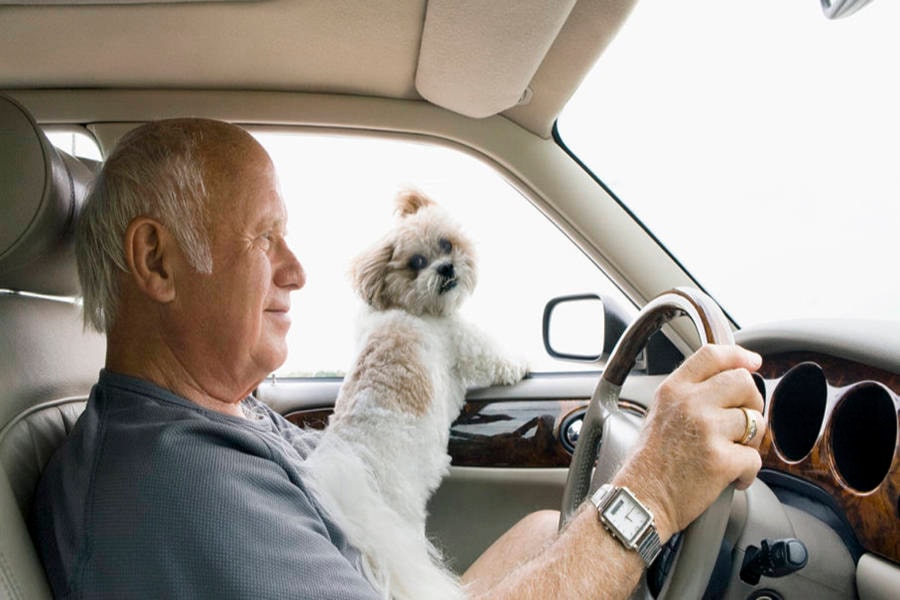ICBC and the B.C. SPCA are encouraging pet owners to keep them safe in some form of safety restraint when traveling in their vehicles.
According to a recent survey of 1,557 ICBC clients of which 45 per cent identified themselves as pet owners, 40 per cent of pet guardians plan to bring their pet on a road trip this summer, but only half of those guardians say they own a vehicle restraint or safety device for their pet.
Of all pet guardians surveyed, only half (52 per cent) own a safety device, with cat guardians (85 per cent) more likely to own one over dog guardians (45 per cent).
Cat guardians were also more likely to be consistent with its use—87 per cent said they always use a restraint versus dog guardians at 55 per cent.
The reasons given for those that never or rarely used a restraint include that their pet is calm, that it’s safe for a pet to be loose, and that the trip is short.
Most pet guardians surveyed said their pet rode in the back seat (50 per cent), while 18 per cent said their pet rode in the front seat, and 16 per cent rode in the cargo area.
Lorie Chortyk, communications manager for the B.C. SPCA, said pets running loose on a driver’s lap or the front seat is another contributor to driver distraction, the second-leading contributing cause of fatal crashes in B.C.
Chortyk said while it may seem like fun to have a small dog sticking its head out the driver side door window, if the vehicle has to come to an immediate stop, the laws of physics turn that dog or cat into a projectile with often fatal consequences.
Related: Concern for dogs stuck in hot cars during summer
“It places the driver and other people in jeopardy when that happens, not to mention the pet,” Chortyk said.
“We want to raise awareness of this because of the distracted driving safety factor, and that it’s now more acceptable to travel with your pet as they are now welcome in more places.”
ICBC offers the following tips to make a pet’s journey in your vehicle safer:
• Use a safety device to protect your pet. Loose animals in the event of crash can become a projectile, injuring themselves and others in the vehicle. Animals can also pose a safety risk for first responders, as a disoriented and injured animal may try to attack an attendant or even cause another crash by running into traffic.
• Let your dog be the backseat driver. Pets are safest when secured in the back seat or cargo area. For the same reason ICBC discourages children under 12 from sitting in the front seat of vehicle, the same safety risks of a deployed air bag can have devastating consequences for animals as well.
• Prevent pet distraction by packing the essentials. Keep pets content by bringing food, water, dishes, bedding and toys. For road trips, it’s best to stock your vehicle with a pet first-aid kit. And plan for a pit stop every few hours—it’s good for drivers and pets alike to stretch and get fresh air.
•Keep pets inside the vehicle while driving. While it’s tempting to let your dog hang his head out the window for the breeze, this can lead to eye injuries due to weather, heavy wind, fly debris or objects coming close to your vehicle. Disable your power windows to prevent your dog from accidentally opening a window, causing it to escape or have the window close on its neck.
• Do not drive with your pet on your lap. This can prevent you from having full control of your vehicle. Your pet could also be seriously injured or killed by a deployed airbag in the event of a crash. Drivers can be ticketed for driving with without due care and attention, with a fine of $368 and six penalty points which comes with a fine of $300.
• Secure your pet if traveling in the back of a pick-up truck. It is illegal and dangerous to travel with an unsecured pet in the exterior of a truck. If you must transport your pet in the back of a truck, the safest method is in a secured crate in the centre of your truck box.
• If you’re not in the car, your dog shouldn’t be either. Vehicles can quickly heat up in summer weather, and can endanger your pet’s health. Even a car parked in the shade with the windows cracked open can get hot enough to cause heatstroke or death of an animal.
To report a typo, email: edit@kelownacapnews.com.
<>@BarryGerding
barry.gerding@blackpress.ca
Like us on Facebook and follow us on Twitter.



